Disclosure: This article contains affiliate links. We may earn a commission from purchases at no extra cost to you, which helps our travel content.
The first thing that hits you in Kenema isn't the sight of distant diamond mines or the colorful storefronts—it's the scent of cassava leaves simmering with groundnut paste, wafting from roadside cookfires as motorbikes zip past. When my emergency response team partnered with a Sierra Leonean health initiative last winter, I never expected Kenema to crawl under my skin and take root there. This eastern provincial capital isn't on most travelers' radar, overshadowed by Freetown's beaches or the chimps of Tacugama. But after spending six weeks here—initially for work, then extending my stay because I couldn't tear myself away—I discovered a resilient city where traditional healing practices, entrepreneurial spirit, and the infamous diamond trade create a cultural alchemy unlike anywhere else I've traveled. This guide isn't about skimming the surface; it's about diving deep into Kenema's beating heart, where centuries-old wisdom meets modern survival, and where the earth's treasures—both mineral and botanical—shape daily life in profound ways.
Understanding Kenema: The Resilient Heart of Eastern Sierra Leone
Kenema sits in Sierra Leone's eastern province, a 5-hour drive from Freetown when the roads cooperate (which they don't always do). As Sierra Leone's third-largest city and a major diamond trading center, it carries both the weight of recent history and the energy of rapid change.
My first morning here, I woke to the call to prayer from nearby mosques blending with roosters announcing daybreak. That symphony of sound became my daily alarm clock, a reminder that Kenema operates on its own rhythm—one that honors both tradition and necessity.
The city's recent history reads like a medical case study in resilience. Kenema was devastated during the civil war (1991-2002), then became ground zero for the 2014 Ebola outbreak. As an EMT, I couldn't help but notice the parallels between trauma response in my work and how an entire city metabolizes collective trauma. The Kenema Government Hospital, where I spent my first two weeks, stands as testament to both struggle and healing—its Lassa Fever ward is world-renowned despite limited resources.
What struck me most was how Kenema's residents carry this history not as victims but as survivors. Mohamed, a local nurse who became my cultural guide, put it perfectly: 'We Sierra Leoneans don't break. We bend, we adapt, we transform.' This philosophy permeates everything from the city's architecture—where war-damaged buildings have been repurposed rather than demolished—to its vibrant market economy where nothing goes to waste.
Kenema's geography shapes its character too. Nestled between rainforest regions and surrounded by diamond-rich earth, the city exists at the intersection of natural bounty and resource extraction. This creates a fascinating economic ecosystem where traditional farming practices coexist with diamond trading, where ancient botanical knowledge meets modern medicine.
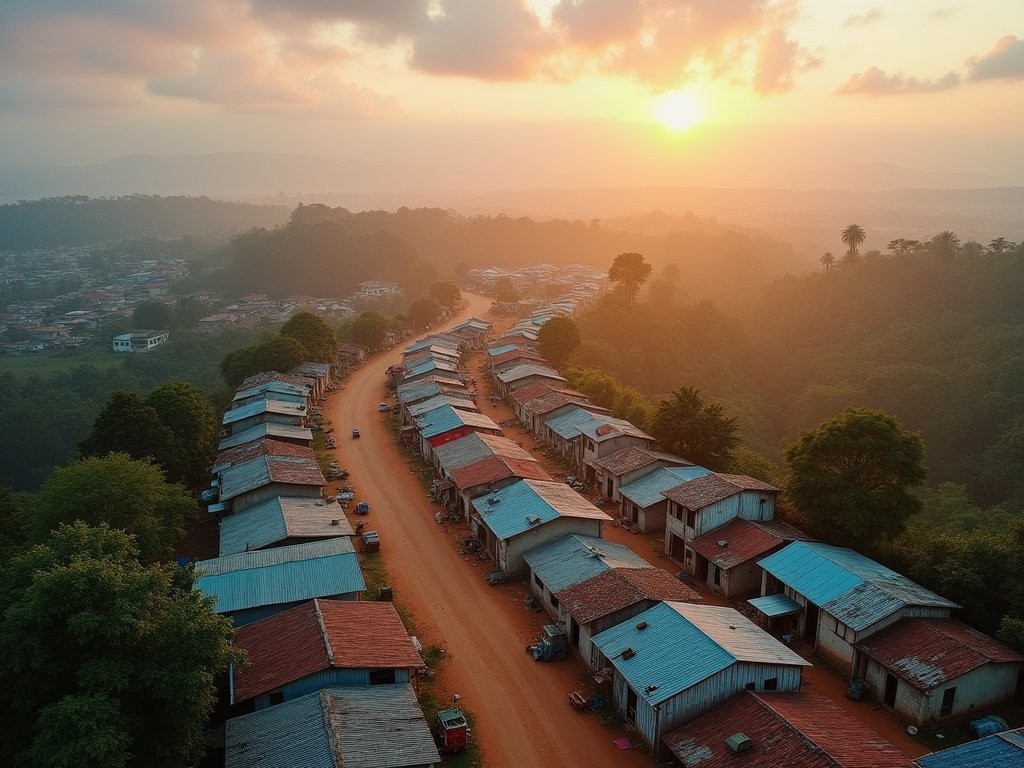
💡 Pro Tips
- Learn basic Krio greetings like 'Kushe-o' (Hello) and 'Tenki' (Thank you) to connect with locals instantly
- Visit the Peace Museum for context on Sierra Leone's civil war before exploring the city
- Exchange money at the official banks rather than with street vendors—the rates are better and it's safer
Navigating Kenema's Healing Markets
If you want to understand Kenema's soul, start at its markets. Forget the sterile, tourist-friendly markets you might find elsewhere—Kenema's commercial spaces pulse with authentic daily life. As someone with Mi'kmaq roots who grew up learning about plant medicine from my grandmother, I felt an immediate kinship with Kenema's traditional healers and herbalists.
The main market downtown is a sensory overload in the best possible way. Narrow pathways wind between stalls where vendors sell everything from pharmaceuticals to powerful botanical remedies. The first time I visited, I brought along my travel water filter (an absolute necessity here) and spent hours talking with medicine women about their craft.
One herbalist named Aminata showed me her collection of bark, roots, and leaves used to treat malaria symptoms—many containing the same compounds found in Western pharmaceuticals, but harvested with ecological knowledge passed through generations. When I mentioned my EMT background, she laughed and said, 'So we are colleagues then!' That bridge between different healing traditions became a theme throughout my stay.
For food, head to the smaller Lambayama Market where local farmers bring produce harvested that morning. The geometric patterns in which vendors arrange their pyramids of oranges, plantains, and cassava reminded me of the sacred geometry principles I've studied—practical arrangements that unconsciously echo universal patterns. Here you'll find the ingredients for Kenema's signature dishes: cassava leaf stew, groundnut soup, and jollof rice that puts West African neighbors to shame.
Don't miss the bush meat section if you want to understand local protein sources, though as a visitor, I'd recommend sticking to the farm-raised options. When shopping, bring small bills (Leones) and a reusable bag. Bargaining is expected but should be good-natured—I found starting at about 60% of the initial price usually leads to a fair middle ground.
Early mornings (6-8am) offer the freshest produce and coolest temperatures. By midday, the heat becomes intense, and afternoon thunderstorms are common during the wet season. I learned to carry my packable rain jacket even on sunny mornings, as Kenema's weather shifts with little warning.
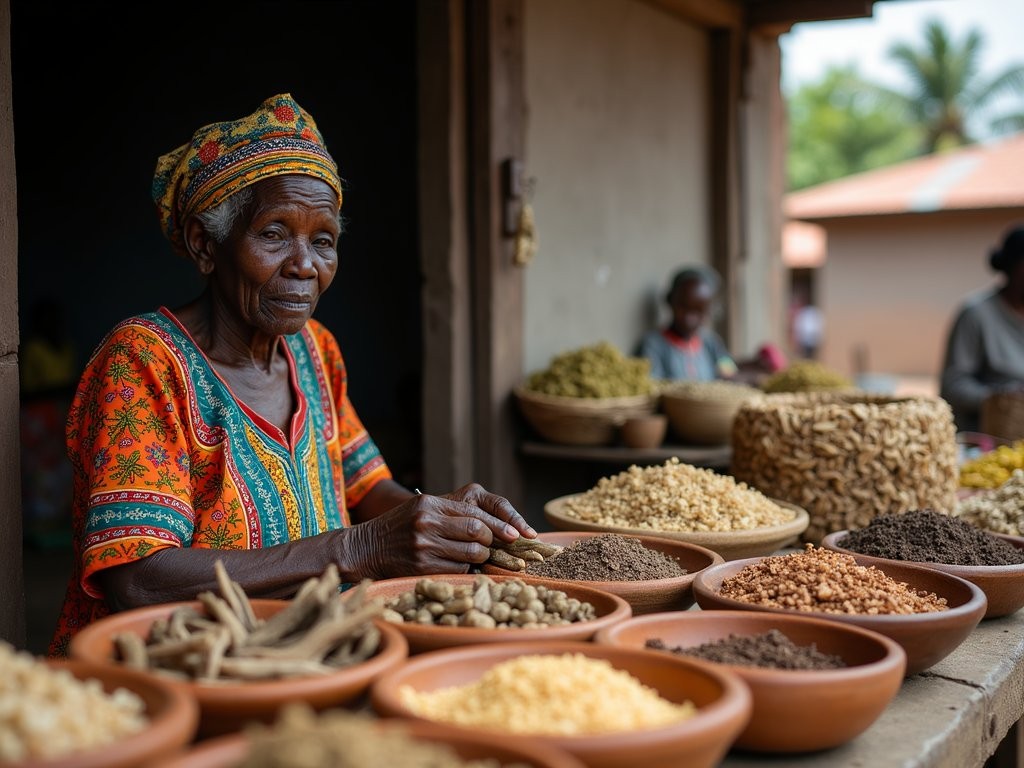
💡 Pro Tips
- Visit markets early morning (6-8am) for the freshest produce and to avoid midday heat
- Bring small bills (Leones) and be prepared to bargain good-naturedly
- Ask permission before photographing vendors or their goods—many are happy to oblige if you purchase something
Diamond Trails: Understanding Kenema's Mining Culture
The phrase 'blood diamonds' has cast a long shadow over Sierra Leone's mineral wealth, but the reality of diamond mining in Kenema is far more nuanced than Hollywood narratives suggest. As someone drawn to how places of extraction can also be spaces of healing, I was determined to understand this complex industry from the ground up.
With proper arrangements (this is not something to attempt independently), visitors can witness artisanal diamond mining in communities outside Kenema. My guide, Ibrahim, a former miner turned educator, took me to Tongo Fields, about an hour's drive from the city. Here, men stand waist-deep in muddy pits, sifting through gravel with handmade screens—a physically demanding process that might yield nothing for weeks, then suddenly a stone worth thousands.
The geometric precision of these hand-dug pits—often perfect hexagons or octagons—fascinated me. When I asked Ibrahim about the shapes, he explained they weren't random but based on traditional knowledge about how diamonds form and where they're likely to be found. Another reminder that indigenous knowledge systems contain sophisticated understanding of natural patterns.
Before visiting, I researched extensively about ethical concerns in the diamond industry. Sierra Leone has made significant progress with the Kimberley Process Certification Scheme, though challenges remain. If you're interested in purchasing diamonds, Kenema has licensed dealers downtown who can show documentation of a stone's origin. I didn't buy any myself, but I did photograph the process with my travel camera, which handled the challenging lighting conditions of both bright sun and deep shadows remarkably well.
What surprised me most was the miners' spiritual relationship with the earth they excavate. Many perform small rituals before digging, asking permission from ancestors and land spirits. Ibrahim explained, 'We don't just take from the earth. We must acknowledge what we're doing and show respect.' This resonated deeply with indigenous perspectives from my own heritage.
For those interested in mining history, the Sierra Leone National Mining Museum in nearby Panguma offers context through artifacts and oral histories. The museum itself operates on limited hours and with basic facilities, but the knowledge of its caretakers is invaluable.
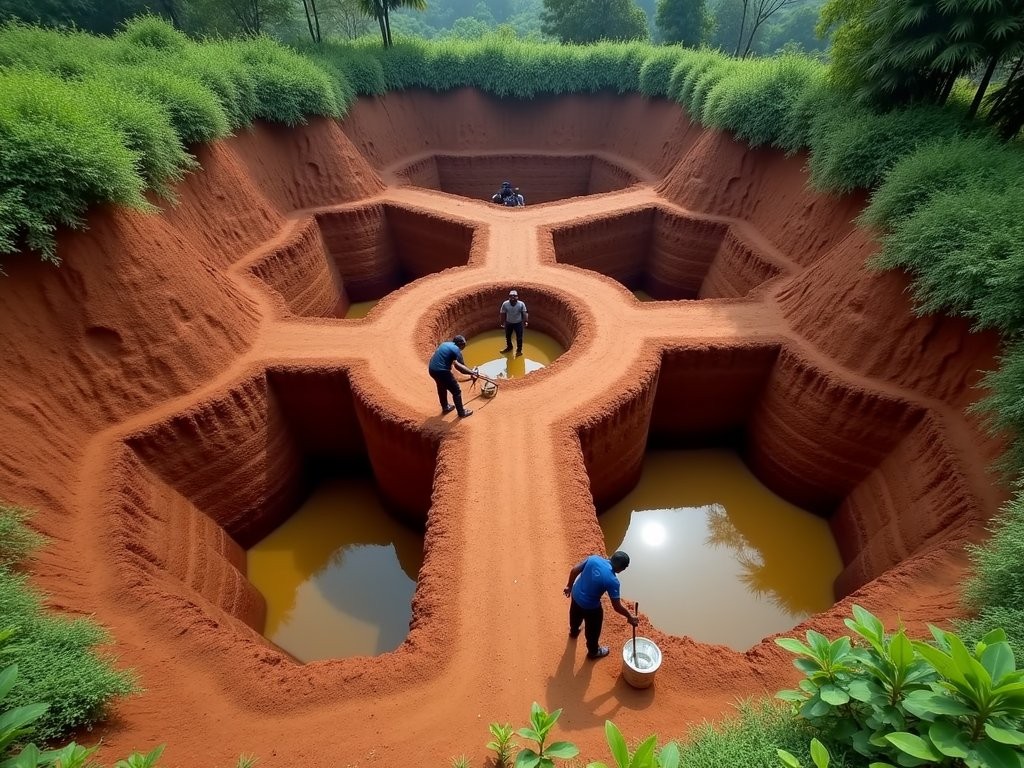
💡 Pro Tips
- Only visit mining areas with official guides arranged through reputable local organizations
- Respect any restrictions on photography at active mining sites
- Learn about the Kimberley Process before considering any diamond purchases
Sacred Spaces: Kenema's Spiritual Geography
Beyond its markets and mines, Kenema reveals itself through sacred spaces that blend indigenous spirituality with introduced religions. As someone who's spent years exploring how landscape and wellness intersect, I found these sites to be powerful anchors in understanding the region's cultural heartbeat.
The Cotton Tree at the city's center stands as a natural cathedral. Estimated to be over 500 years old, this massive tree serves as both landmark and spiritual nexus. Local tradition holds that spirits dwell within ancient cotton trees, and even in this predominantly Muslim and Christian city, people still leave small offerings at its base. I spent several mornings here with my travel journal, sketching the intricate root system and observing how residents interact with this living monument.
Kenema's mosques and churches often stand side by side, with the Central Mosque and St. Paul's Cathedral representing the religious harmony that characterizes much of Sierra Leone. What fascinated me was how traditional spiritual practices weave through these introduced faiths—creating syncretic expressions unique to the region.
Outside the city, sacred groves mark spaces where traditional ceremonies still occur, particularly those associated with Poro and Sande societies (male and female initiation groups respectively). These areas are generally closed to outsiders, and it's essential to respect these boundaries. However, with proper introductions through local contacts, I was invited to witness a blessing ceremony at the edge of one such grove.
The ceremony involved rhythmic drumming that altered my consciousness in ways I've only experienced during Mi'kmaq ceremonies back home. The mathematical precision of the polyrhythms—another expression of sacred geometry through sound—created what felt like a physical restructuring of space around us. My medical brain recognizes this as entrainment, where neural oscillations synchronize to external stimuli, but the experience transcended clinical explanation.
For those interested in these spiritual dimensions, approach with genuine respect rather than touristic curiosity. Local guides can help navigate appropriate access, but be prepared for some spaces to remain closed to visitors—a boundary that deserves honor. When visiting any sacred site, modest dress is essential (covered shoulders and knees at minimum), and always ask before taking photographs.

💡 Pro Tips
- Visit the Cotton Tree early morning or late afternoon when locals gather there
- Dress modestly when visiting religious sites (covered shoulders and knees)
- Ask permission before entering any space that appears to have spiritual significance
Healing Through Food: Kenema's Culinary Medicine
If there's one thing my travels have taught me, it's that food is medicine—a truth recognized by both my Mi'kmaq ancestors and the people of Kenema. The city's culinary landscape offers more than sustenance; it provides a direct connection to healing traditions that have sustained communities through unimaginable hardships.
Street food in Kenema isn't just delicious—it's functional. Take plasas, the leafy stews that form the backbone of local nutrition. Made from cassava leaves, sweet potato leaves, or krain krain (a mucilaginous green similar to okra), these mineral-rich preparations address common nutritional deficiencies. When I mentioned to Mariama, a food vendor near the hospital, that I was feeling run down after a long shift, she prescribed her cassava leaf stew with extra red palm oil—a combination that delivered iron, vitamin A, and protein in perfect proportion.
For travelers concerned about food safety, I follow a simple protocol: eat where locals gather in numbers, look for places where food is cooked fresh in front of you, and always carry my digestive enzymes as backup. My EMT training makes me cautious, but overly restrictive eating means missing profound cultural connections.
Kenema's food scene isn't just about traditional cooking. The city has embraced its own version of food truck culture with mobile kitchens serving fusion dishes that blend Sierra Leonean flavors with global influences. My favorite was 'Diamond Bites,' a motorbike-pulled cart where the chef, a former diamond polisher named Joseph, creates incredible groundnut stew tacos that represent Kenema's cultural hybridization in edible form.
For those staying longer, consider arranging a cooking class. Mine came about organically when I complimented a neighbor's aromatic palm butter soup and found myself drafted into her kitchen the next morning. She taught me that certain ingredients aren't just for flavor—the bitter herbs added at the end serve as natural antimicrobials in a hot climate with limited refrigeration. This intersection of flavor and function exemplifies how traditional knowledge contains sophisticated understanding of food safety.
Drink options require thoughtfulness. Tap water isn't safe for visitors, but locally produced ginger beer and hibiscus tea ('sorrel') offer refreshment with medicinal benefits. Palm wine, tapped fresh from trees and lightly fermented, connects drinkers to a tradition thousands of years old—though quality varies dramatically, so follow local recommendations.
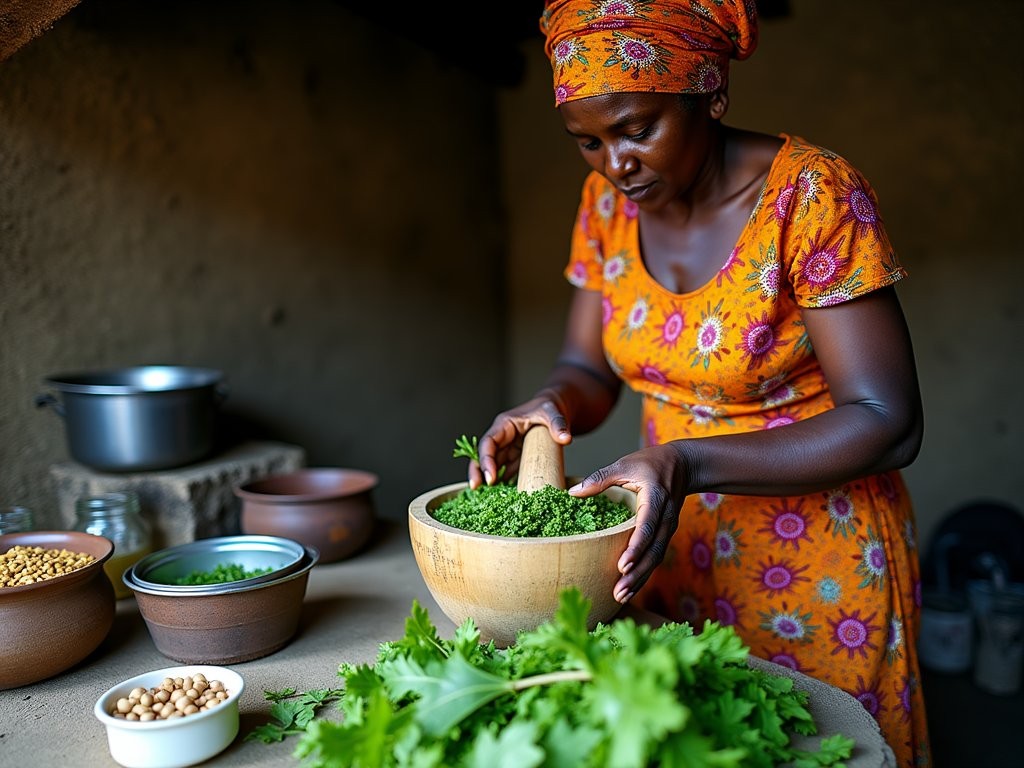
💡 Pro Tips
- Look for food stalls with high turnover and where locals eat in numbers
- Try plasas (leafy stews) for a nutritious introduction to Sierra Leonean cuisine
- Visit the Diamond Bites food cart near the central roundabout for fusion dishes that tell Kenema's story
Beyond the City: Healing Landscapes Around Kenema
Kenema's surrounding landscapes offer profound experiences for travelers willing to venture beyond city limits. After weeks of intense work at the hospital, these excursions became my own medicine—reconnecting me to natural rhythms and the land's inherent healing properties.
The Kambui Hills Forest Reserve, just 10km south of Kenema, harbors some of West Africa's most biodiverse forests. Hiring a local guide is essential—not just for navigation but for understanding the botanical pharmacy growing wild here. My guide, Emmanuel, is a third-generation traditional healer who identified plants used to treat everything from malaria to wound infections. Many contained compounds that parallel pharmaceuticals I carry in my EMT kit, a reminder that Western medicine often derives from indigenous knowledge systems.
The hike through Kambui Hills isn't technical but requires reasonable fitness and preparation. The forest creates its own microclimate—cooler than the city but intensely humid. I relied heavily on my hiking backpack which kept essentials accessible while allowing proper ventilation against my back in the tropical heat.
For water-based healing, the Moa River offers respite from Kenema's dust and heat. Local communities have used specific river bends as therapeutic spaces for generations, with different sites prescribed for different ailments. What Western medicine might view simply as hydrotherapy, local tradition understands as engagement with water spirits and the river's inherent power. The confluence points—where tributaries join the main river—are considered especially potent healing spaces.
At one such confluence near Blama (30 minutes from Kenema), I witnessed a ceremony where river clay was applied to a child with skin ailments. The clay's mineral content likely provided genuine medicinal benefit, but the ritual context—the songs, the community presence, the precise geometric patterns in which the clay was applied—created a holistic healing experience addressing body, mind, and spirit simultaneously.
For overnight excursions, the Tiwai Island Wildlife Sanctuary on the Moa River offers Sierra Leone's premier ecotourism experience. This 12 square kilometer island hosts 11 primate species and rare pygmy hippos. Simple bungalows provide accommodation, but facilities are basic—bring everything you need, including a good headlamp, insect repellent, and sufficient cash as there are no ATMs. The sanctuary's community-based management model ensures tourism benefits local villages directly.
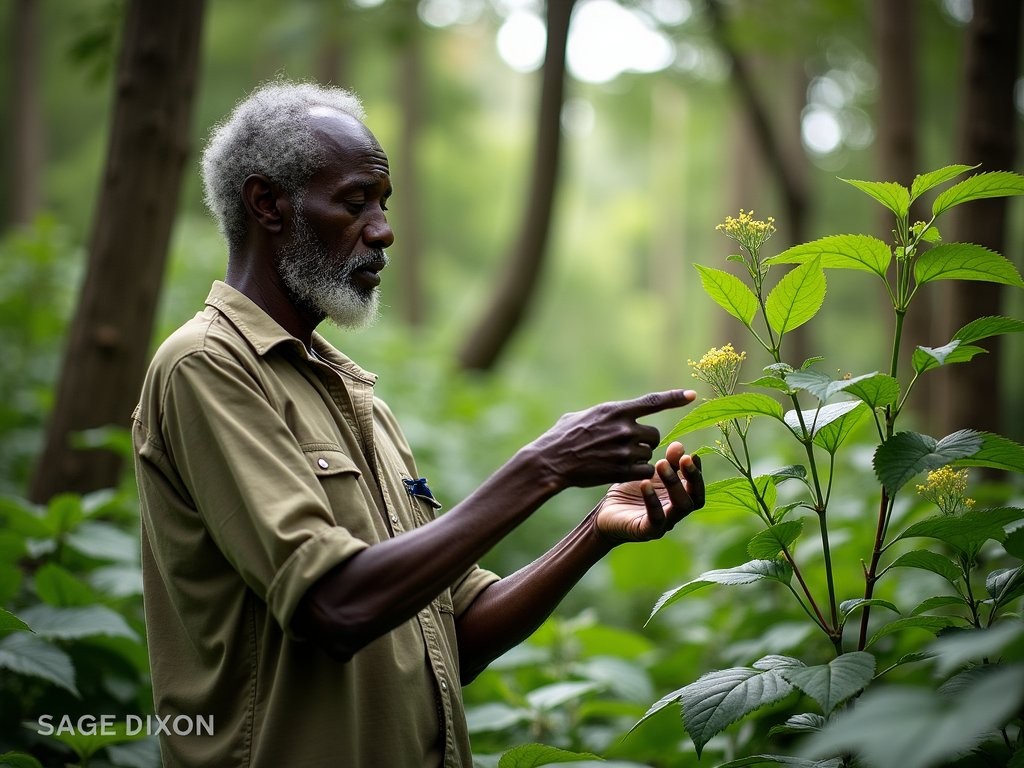
💡 Pro Tips
- Hire guides through official channels like the Eastern Province Tourist Board office in Kenema
- Pack more water than you think you'll need for forest excursions—dehydration happens quickly in the humidity
- For Tiwai Island, book at least two weeks ahead through their Kenema office as space is limited
Final Thoughts
As my two weeks in Kenema extended to six, I realized this city had offered me a profound lesson in resilience—one that resonates with both my EMT work and indigenous heritage. Kenema doesn't sanitize its struggles or curate its experiences for visitor comfort. Instead, it invites the willing traveler into a raw, authentic relationship with both its challenges and its beauty. The diamond mines that once fueled conflict now support families. The markets that once emptied during Ebola now bustle with life. The traditional knowledge that colonial powers attempted to eradicate now complements modern medicine in the hospital where I worked.
Kenema taught me that healing isn't about erasing scars but about transforming them into sources of strength and wisdom. For travelers seeking manufactured experiences, this diamond city might disappoint. But for those willing to engage with a place on its own terms—to listen more than speak, to learn more than teach—Kenema offers riches far more valuable than the gems in its soil. As the Krio saying goes, 'Sɔfli sɔfli, kach mɔnki'—'Slowly, slowly catches the monkey.' Take your time here. The real Kenema reveals itself to those patient enough to wait.
✨ Key Takeaways
- Kenema rewards travelers who approach with respect and genuine curiosity rather than touristic expectations
- The intersection of traditional healing practices and modern resilience creates unique cultural experiences
- Local guides are essential for meaningful access to both cultural and natural sites around Kenema
📋 Practical Information
Best Time to Visit
November-February (dry season)
Budget Estimate
$30-50 USD per day including simple accommodation, food, and local transport
Recommended Duration
Minimum 10 days, ideally 2 weeks
Difficulty Level
Challenging

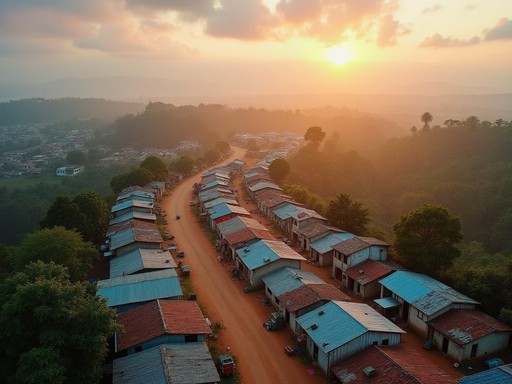
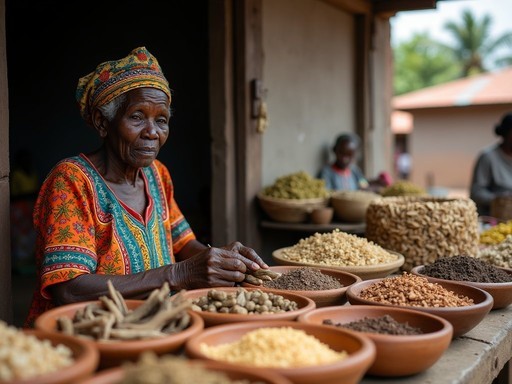
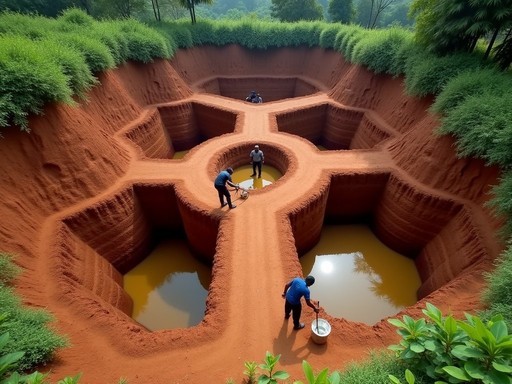
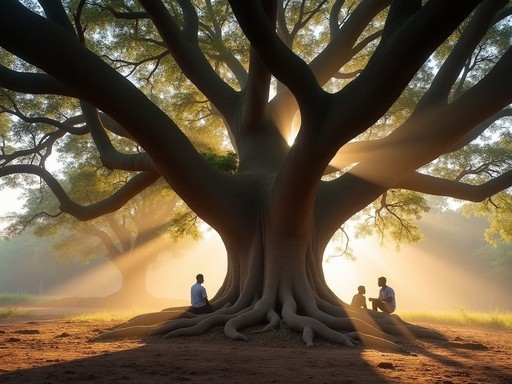
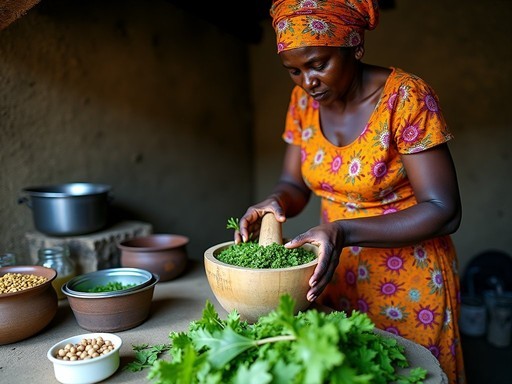
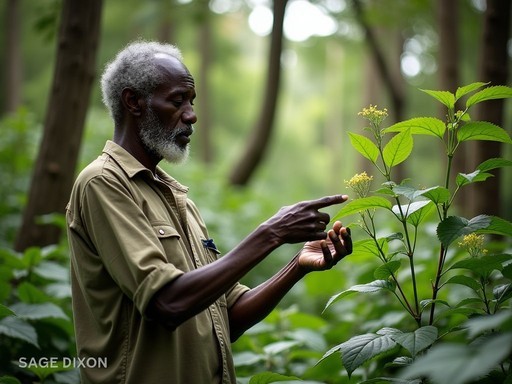


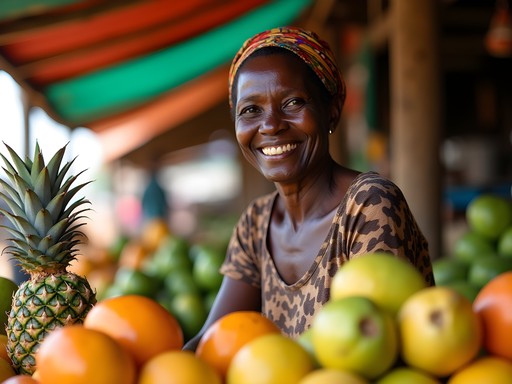
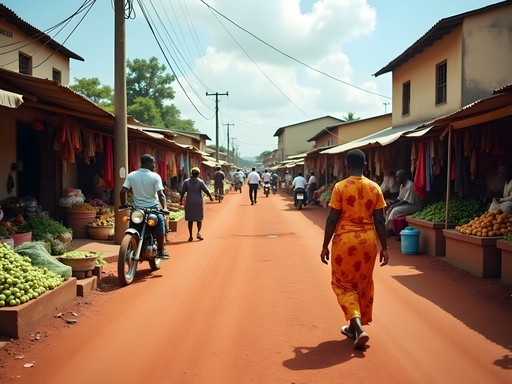





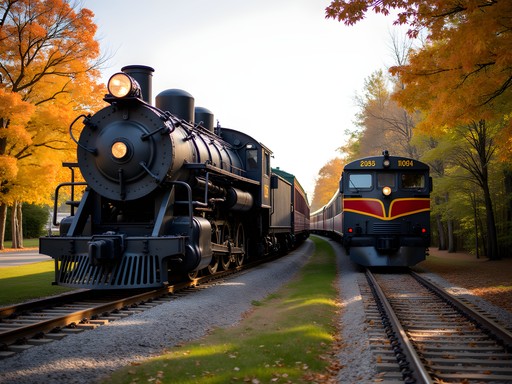
Comments
Casey Andersson
Sage, this post transported me right back to West Africa! I visited Kenema briefly while doing a luxury tour of Sierra Leone last year (quite the contrast to most of my usual travels). The resilience you mentioned really struck me too - I had a fantastic conversation with a woman selling batik fabrics who survived both the civil war and Ebola. Her optimism was contagious! For anyone planning to visit, I'd add that the cellular service can be spotty, so I was glad I had my offline translator downloaded. The section on spiritual geography was spot-on - those sacred forests have an energy that's hard to describe. Did you get to attend any traditional ceremonies during your extended stay?
Sage Dixon
Casey - yes! I was incredibly fortunate to be invited to a naming ceremony in a village just outside Kenema. The community elder had to vouch for me, and I was asked not to photograph certain parts, but the experience was profound. The rhythmic drumming and singing continued for hours. Good point about the offline translation tools - essential in the more remote areas!
coffeerider
This thread is gold! @Casey - was it difficult arranging transportation around Kenema? Planning a trip for next year and trying to figure out logistics.
Casey Andersson
@coffeerider - Transportation can be tricky but doable! For getting around town, motorcycle taxis (okadas) are everywhere and cheap. For longer trips, I hired a driver through my guesthouse - about $50/day but worth it for comfort and local knowledge. The public minivans (poda-podas) are an adventure if you're up for it, but they wait until completely full before departing, so pack your patience!
sunnyclimber
Is it safe for solo female travelers?
Sage Dixon
Hi @sunnyclimber! I'd say it's relatively safe but requires the usual precautions. I met several solo female travelers in Kenema who had positive experiences. The locals are generally very protective of visitors. That said, it's best to avoid walking alone at night and always let someone know your plans. The guest houses I mentioned in the article are all secure options.
Casey Andersson
Just to add my two cents as a female traveler who visited last year - I felt quite safe in Kenema during daytime. The people were incredibly welcoming! I stayed at Paloma Guest House which had great security and the staff would even arrange trusted motorcycle taxis for me. Just be prepared for curious stares as they don't see many tourists.
sunnyclimber
Thanks both! Super helpful info!
coffeerider
Wow Sage, this is exactly the kind of authentic travel writing I live for! I spent 3 weeks in Sierra Leone back in 2022 but completely missed Kenema. Those market descriptions had me feeling like I was right there smelling the cassava leaves. How was the language barrier? I found most people in Freetown spoke English but wondering if it's different in the eastern regions? Your section on the diamond mining culture was especially fascinating - did you get to speak with any of the miners directly?
Sage Dixon
Thanks @coffeerider! The language barrier wasn't too bad - English is the official language, but Krio is the lingua franca. Most people in Kenema speak some English, especially those working in markets or with tourists. Learning a few Krio phrases really opened doors though! And yes, I did speak with several miners - their stories were incredible. One man had been mining for 30+ years and had only found two significant diamonds.
coffeerider
That's amazing context, thanks Sage! Adding Kenema to my list for when I return to West Africa.
redace
THIS POST IS EVERYTHING!!! 🇸🇱 Finally someone writing about Sierra Leone beyond the civil war narrative! The food descriptions had me drooling - that cassava leaf stew is LIFE-CHANGING! I spent a month volunteering in Kenema in 2024 and it completely changed my perspective. The diamond trails section is spot-on about the ethical complexities. Can't wait to go back! Sage, you've captured the spirit of this place perfectly! 👏👏👏
Sophia Gomez
Sage, thank you for highlighting Kenema! I've been working on sustainability projects in Sierra Leone for the past few years, and this city often gets overlooked. For anyone planning to visit, I recommend connecting with local NGOs in advance - they can provide invaluable context about the diamond industry and community development. The resilience you mentioned is exactly what makes this region so special. Did you get a chance to visit the weekly cloth market? The textiles there are extraordinary.
oceanwanderer
This post brings back memories! I traveled through Sierra Leone in 2024 and Kenema was definitely a highlight. The diamond mining culture is fascinating but also complex. I'd recommend visitors bring a good water filter when traveling in this region - tap water isn't reliable. I used my water purifier constantly and it saved me from stomach issues. The spiritual geography section really resonated - I attended a local church service and was overwhelmed by the community's welcome despite language barriers.
wildphotographer
Great post! What kind of accommodations did you find in Kenema? Any recommendations for someone planning to visit?
oceanwanderer
Not the author, but when I was in Kenema last year, I stayed at a local guesthouse called Paloma that was basic but clean and the family who runs it was incredibly welcoming. About $25/night. Don't expect luxury but it's authentic!
wildphotographer
Thanks for the tip! That sounds perfect for what I'm looking for.
Casey Andersson
Sage, this is exactly the kind of deep-dive local perspective I adore! I visited Freetown last year but regrettably missed Kenema. Your description of the cassava leaf stew has me practically booking flights. Did you find the diamond mining history created any tension with visitors, or were locals open to discussing it? The resilience narrative really resonates - I found similar strength in communities across West Africa. Brilliant piece!
redace
Casey - if you go back to Sierra Leone, you MUST visit Kenema! I was there in 2024 and the food alone is worth the journey. Try the groundnut stew if you can!
Casey Andersson
Thanks @redace! Groundnut stew is going on my must-try list. Did you feel safe traveling solo there?
redace
Absolutely! I traveled solo as a woman and found people incredibly helpful. Just use common sense like anywhere. The local transport was an adventure though - pack light if taking those shared taxis!
adventurelover
Wow, Sierra Leone isn't on most people's radar! Love seeing posts about less-visited places!
AfricaExplorer22
Just got back from Sierra Leone last month and spent 3 days in Kenema! Wish I'd read this before going. The resilience you mentioned is so evident everywhere. We visited a community-run diamond washing station where they explained the whole process from extraction to sorting. Our guide Ibrahim was incredible at explaining the mining history and current practices. One thing I'd add for future travelers - the motorcycle taxis (okadas) are the fastest way around town but negotiate the price BEFORE getting on. And the guesthouse near the central roundabout (can't remember the name - it had blue gates) was basic but clean and the owner helped arrange everything for us. Did anyone else try the palm wine? The fresh morning stuff was delicious but wow, the fermented evening batch was STRONG!
coolguy
was that the blue guesthouse with the little restaurant attached? i saw it mentioned in some other blog too
AfricaExplorer22
Yes! That's the one! The owner's wife makes an amazing groundnut stew for dinner if you ask in advance.
Venture X
Premium card with 2X miles, $300 travel credit, Priority Pass